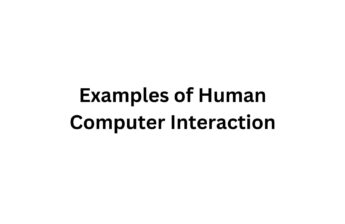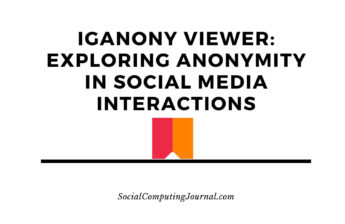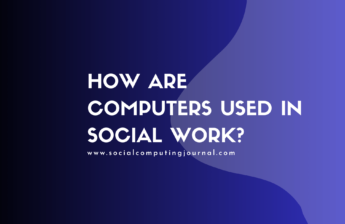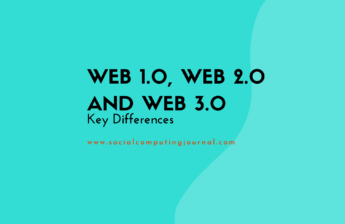The interaction of social behavior and computational systems is the focus of social computing, a branch of computer science. It is based on the use of software and technology to create or recreate social conventions and social settings. Blogs, email, instant messaging, social network services, wikis, social bookmarking, and other examples of what is commonly referred to as social software exhibit social computing concepts.
Definition 2:
“Social computing facilitates social interaction via computers.” It should be considered what social computing is all about. However, Social computing is not to be confused with artificial intelligence applications such as socially intelligent computing, in which the computer is meant to demonstrate social behaviors and make the user feel more socially involved when they are not.
Contents
History of Social Computing
The idea that humans—and human behavior—are deeply social is the starting point for social computing. Humans orient to one another from birth, and as they grow older, they develop capacities to interact with one another. This includes everything from facial expression to gestures to spoken and written words. As a result, people are acutely aware of the conduct of those around them and make a plethora of decisions influenced by their social environment. Social knowledge provides a foundation for reasoning, planning, and coordinating activity, whether it’s finishing up a discussion when the audience starts fidgeting, preferring the full restaurant over the practically deserted one, or crossing the street against the light because everyone else is doing it.
The idea of ‘Social Computing’ is that by making socially produced information available to users, it is possible to design digital systems that enable meaningful functionality. This data can be directly presented, such as when systems display the number of people who have rated a review as helpful or unhelpful. Alternatively, the data could be offered after it has been filtered and aggregated, as when algorithms propose a product based on what other people with comparable purchase histories have bought. Alternatively, as with Google’s page rank algorithms, which order search results based on the number of pages that (recursively) point to them, the information might be presented indirectly. In each of these scenarios, information generated by a group of individuals is used to offer or improve the system’s functionality. Systems like this, as well as the procedures and concepts that underpin them, are the focus of social computing.
PLATO, the PLATO computer system based at the University of Illinois at Urbana Champaign in 1973, may be the earliest example of social computing in a live production environment with hundreds, if not thousands, of users, when social software applications for multi-user chat rooms, group message forums, and instant messaging appeared all within that year. Email was introduced in 1974, along with the world’s first online newspaper, NewsReport, which featured information supplied by users as well as articles authored by editors and reporters.

The Wisdom of Crowds by James Surowiecki popularized the concept of social computing, which involves supporting “computations” carried out by groups of people. Collaborative filtering, online auctions, prediction markets, reputation systems, computational social choice, tagging, and verification games are examples of social computing in this sense. This sense of social computing is the emphasis of the social information processing page.
Examples of Social Computing:
Blogs, wikis, Twitter, RSS, instant messaging, multiplayer gaming, open source development, as well as social networking and social bookmarking sites, are all examples of social computing. Web 2.0, which may be viewed of as a framework of apps supporting social computing activities, is closely tied to the concept of social computing.
Here are examples of Social Computing:
- Social media platforms: Facebook, Twitter, Instagram, LinkedIn




- Blogs: WordPress, Blogger, Medium
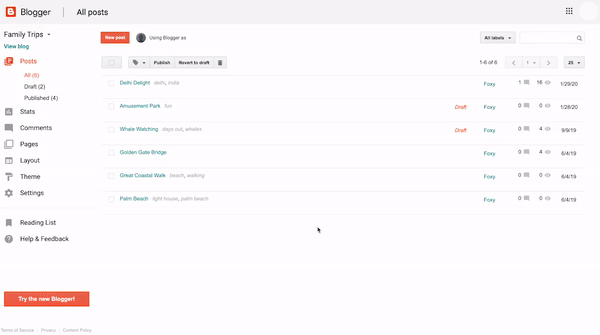
- Wikis: Wikipedia, MediaWiki
- Online forums: Reddit, Quora, Stack Overflow
- Customer support platforms: Zendesk, Freshdesk, Help Scout
Social Computing and Business
Within an enterprise, social computing has the potential to empower and engage employees, as well as generate business benefits. Paul Galvin describes how installing SharePoint, for example, can help with this process:
Social computing can also be used by businesses to connect with their customers and promote their brands. Consumer relationship management (CRM) can benefit from social computing since it allows a company to monitor public perception of its brand and respond swiftly to customer complaints. Crowdsourcing is also being used by many major organizations for research. Enterprise 2.0 refers to the usage of social computing applications by businesses.
Social Computing Resources and Further Reading
Principles of Social Computing
Read about the principles of social computing.
How Social Computing Improves Customer Service?
How the use of social computing can improve the customer service.
Applications of Computer in Social Computing
Computers have many applications in our society as well as social computing.
Advantages and Disadvantages of Social Computing
There are pros and cons of social computing. Read about the advantages and disadvantages of social computing.
Benefits of Social Computing in Business and Retail
Social computing has many benefits in business and retail.
Addressing Social Issues in Computing


